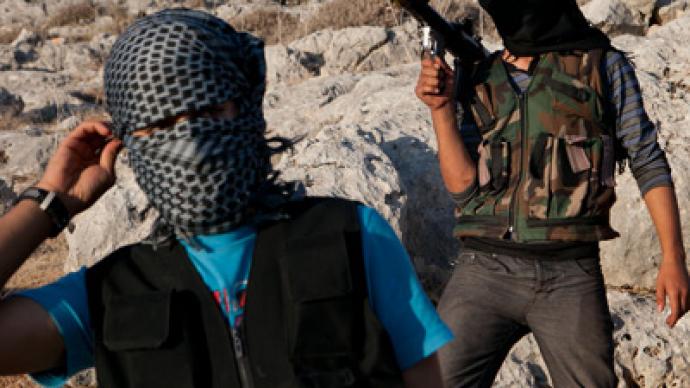Los Cabos plan for Syria: Using Russia to oust Assad

The US is actively persuading Russia to throw its weight behind the West in deposing regimes Washington wants toppled, says Director General of the Institute for Foreign Policy Research and Initiatives in Moscow Veronika Krasheninnikova.
In the article below she explains her view.
As the G20 summit opened in Los Cabos, Mexico, Western media ran headlines saying President Obama would pressure Vladimir Putin over Syria. For Moscow this is an opportunity to act as an independent player and send a message of confidence to allies. Indeed, the fate of Syria largely depends upon Russia, which is evident to both the US and Damascus. The White House has already acknowledged its key role in delivering arms for the Syrian insurgency. The shipments have been sponsored lavishly by Qatar and Saudi Arabia. US officials are also negotiating a “second front” with the Kurds in eastern Syria to draw Syria’s pro-government forces from the western part of the country, which is now home to a concentration of rebel forces. The much trumpeted Kofi Annan plan has actually done nothing more than buy the insurgents some time to get trained and receive their arms shipments. “They used to be described as ‘rabble,’ but I would no longer call them that,” says Jeoffrey White, a retired reconnaissance specialist. “What they look like now is an increasingly combat-efficient guerilla force.” So how do the Syrian rebels get their military supplies? Reports of arms shipments to Syria first emerged as early as the summer of 2011. Several “parcels” carrying firearms or money were subsequently intercepted in Lebanon. On April 27, a combined force of the Lebanese navy and the UN Interim Force in Lebanon (UNIFIL) captured the vessel Letfallah II off the Lebanese coast. The ship was en route to Tripoli, Lebanon (not to be confused with the capital of Libya), which is the nearest sea port to the city of Homs, Syria – a rebel stronghold where British and Qatari military instructors give the Syrian insurgents their drills. According to the Automatic Identification System, the vessel was registered in Freetown, Sierra Leone, and had departed from the port of Homs, Libya (not to be confused with the Syrian Homs). The Lebanese military have meticulously documented every step of the discharge procedure, leaving about 500 photos identifying the freight and its markings.There is more to it. According to industry magazine The Maritime Executive, the ship is owned by Khafaji Shipping Co., which is registered in Honduras – a country that has a longstanding record of serving as a front for covert US operations. Following a visit to Lebanon by UN special representative for the Middle East Terje Rod-Larsen on May, 8, it became public that the UN envoy had instructed the Lebanese government to refrain from similar searches of other ships coming from Libya. It has evidently become standard foreign policy practice for the United States to use freshly “liberated” countries as a beachhead for penetrating other nations, which are just in for a “regime change.” One year ago, Egypt was aiding the insurgents in Libya. Today, the victorious Libyan rebels are supplying the militants in Syria. This is classic Domino Theory: regimes toppled one by one, each revolution being used to influence a neighboring country. The US administration has been persuading Russia to support the West in deposing regimes that have fallen out with Washington. Should Moscow cave in, this would hardly make Russia more secure. On the contrary, “weakness is provocative,” as former Secretary of Defense Donald Rumsfeld liked to say. Russia’s area of influence presently borders on Syria and Iran. If the Kremlin agrees to play ball with the White House on Syria, Russia may soon wake up to find the red line shifted right up to the Caucasus and Central Asia. In a worst-case scenario, we might even end up being “liberated” with help from the very “new democracies” we have failed to protect.
Veronika Krasheninnikova , specially for RT
The statements, views and opinions expressed in this article are those of the author and do not necessarily represent those of RT.














